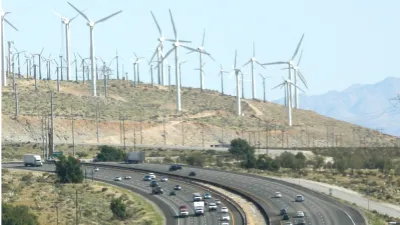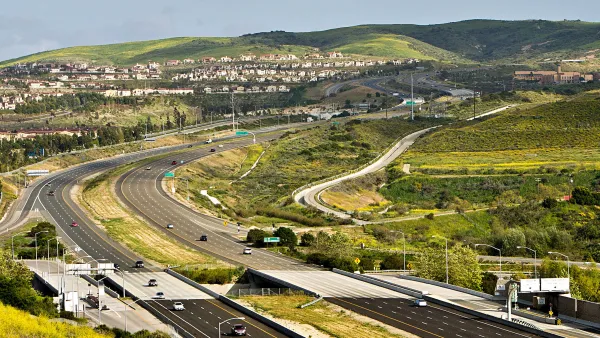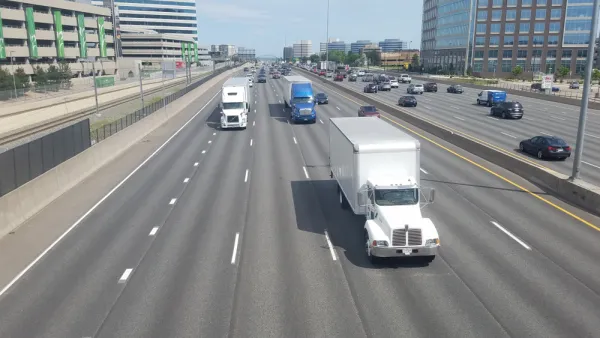In this San Francisco Chronicle Open Forum, Brian Kelly, secretary of the California State Transportation Agency, makes the case that maintenance as well as capital costs be included when financing new infrastructure projects.

State transportation policy makers and elected leaders have made a strong case to increase infrastructure funds, be it through increasing gas taxes and vehicle registration fees, road tolls, sales taxes, and diversions from existing sources of revenue.
However, Secretary Brian Kelly, whose agency overseas oversees the Department of Motor Vehicles, the California Highway Patrol, Caltrans, and high-speed rail, writes that where the money is spent is just as important, if not more, than simply increasing revenues to match current expenses.
"Ribbon-cutting ceremonies may be more exciting than routine maintenance, but it’s unwise to build something new without a commitment to maintain it," writes Kelly. "Fifteen years after building a new road, the pavement will have deteriorated 40 percent and begin to worsen exponentially in the next several years."
We must get smarter about where the money is spent. States, on average, spend about 55 percent of their transportation money on new construction... Building new infrastructure without funding for its upkeep is unsustainable.
The backlog of maintaining streets and roads has contributed to the 59 billion problem of deferred highway and bridge maintenance that Gov. Jerry Brown included as one of his three top infrastructure goals in his January inaugural address.
That’s why the California State Transportation Agency recommends a “fix-it-first” approach to transportation infrastructure that prioritizes the preservation of our existing highway system.
A similar case was made in an opinion in The Sacramento Bee last month by Ethan N. Elkind, Associate Director of the Climate Change and Business Research Initiative at the UCLA School of Law’s Emmett Institute on Climate Change and the Environment and UC Berkeley School of Law’s Center for Law, Energy & the Environment (CLEE).
Every year, the state, regional agencies and local governments spend about $28 billion [on California's transportation infrastructure]. But are we spending that money effectively?
He goes on to make the same case that Kelly makes about how capital projects receive the most attention, but he applies it to the regional and local levels as well. He refers readers to his February 2105 study, "MOVING DOLLARS: Aligning Transportation Spending With California’s Environmental Goals" [PDF].
Correspondent's note: The URL provided for this article will hopefully provide free access to the op-ed as it may otherwise require a subscription.
FULL STORY: Road funding must include construction and maintenance costs

Analysis: Cybertruck Fatality Rate Far Exceeds That of Ford Pinto
The Tesla Cybertruck was recalled seven times last year.

National Parks Layoffs Will Cause Communities to Lose Billions
Thousands of essential park workers were laid off this week, just before the busy spring break season.

Retro-silient?: America’s First “Eco-burb,” The Woodlands Turns 50
A master-planned community north of Houston offers lessons on green infrastructure and resilient design, but falls short of its founder’s lofty affordability and walkability goals.

Test News Post 1
This is a summary

Analysis: Cybertruck Fatality Rate Far Exceeds That of Ford Pinto
The Tesla Cybertruck was recalled seven times last year.

Test News Headline 46
Test for the image on the front page.
Urban Design for Planners 1: Software Tools
This six-course series explores essential urban design concepts using open source software and equips planners with the tools they need to participate fully in the urban design process.
Planning for Universal Design
Learn the tools for implementing Universal Design in planning regulations.
EMC Planning Group, Inc.
Planetizen
Planetizen
Mpact (formerly Rail~Volution)
Great Falls Development Authority, Inc.
HUDs Office of Policy Development and Research
NYU Wagner Graduate School of Public Service



























